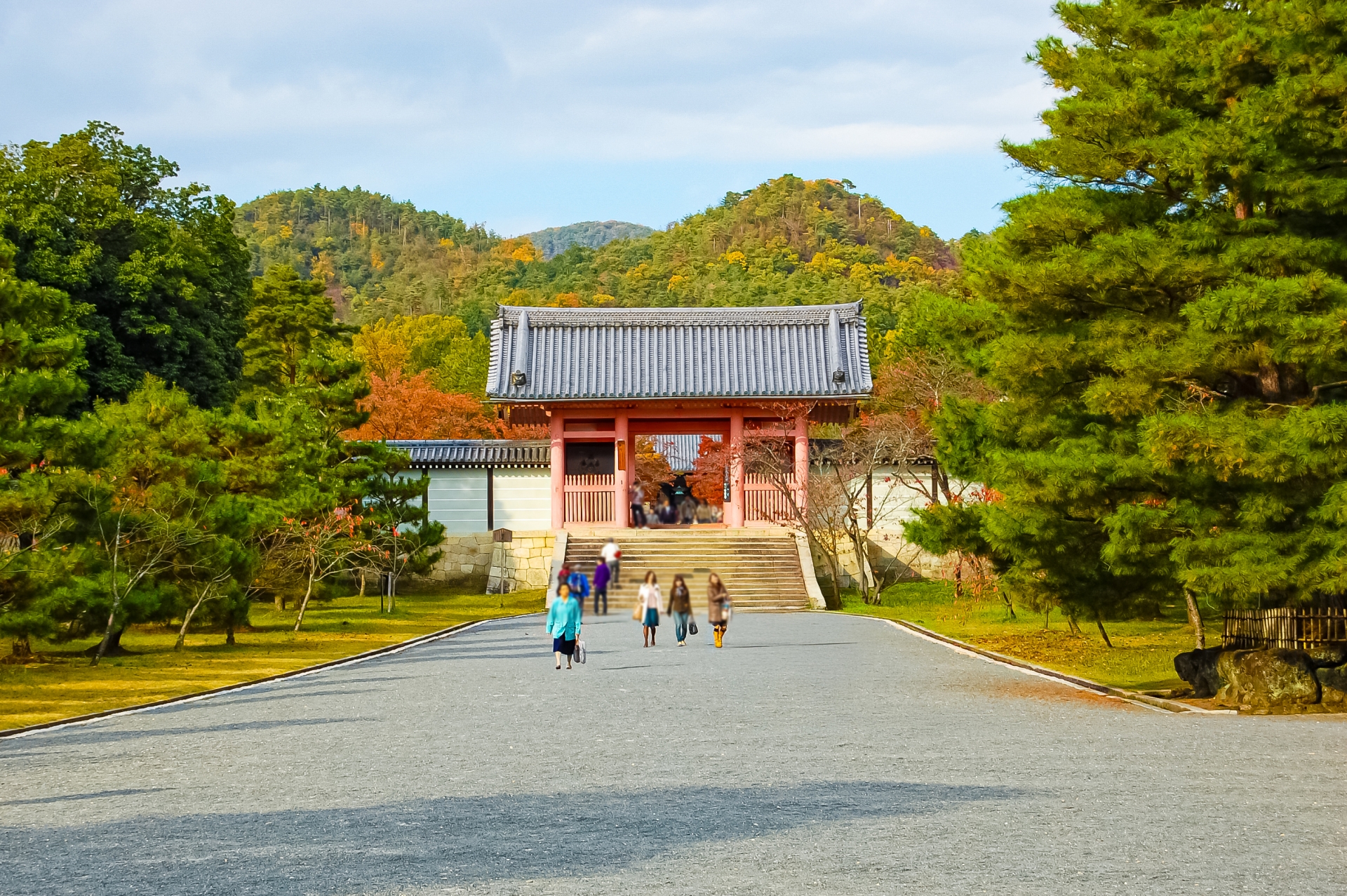Ninna-ji Temple, located in the historic city of Kyoto, Japan, is one of the most important Buddhist temples in the country. A UNESCO World Heritage site, Ninna-ji attracts visitors from around the world who come to explore its rich history, stunning architecture, beautiful gardens, and cultural significance. This temple offers a perfect blend of spirituality and nature, making it a must-visit location for travelers in Kyoto.

History of Ninna-ji Temple
Founded in 888 by Emperor Uda, Ninna-ji Temple has a long and rich history. Emperor Uda, after retiring from the throne, chose this location as a place for prayer and meditation. The temple became an important religious site, particularly during the Heian period (794-1185), and has continued to hold cultural and spiritual significance throughout the centuries. As the head temple of the Omuro school of Shingon Buddhism, Ninna-ji has played a major role in shaping Japan’s Buddhist traditions.
Key Attractions of Ninna-ji Temple
Ninna-ji Temple is famous for its beautiful gardens and impressive architectural structures. The temple’s most iconic feature is its five-story pagoda, which stands tall in the temple grounds and is one of the tallest wooden pagodas in Japan. The pagoda is a symbol of the connection between heaven and earth, offering visitors a sense of peace and reverence.
The temple also features the Kyozo Hall, known for its unique architectural style. Visitors can also admire the “Goten,” an imperial palace-like building that was once used by the imperial family. These architectural wonders make Ninna-ji Temple a fascinating place to explore.
Omuro Cherry Blossoms: A Unique Attraction
One of the most special features of Ninna-ji Temple is its Omuro cherry blossoms. These late-blooming cherry trees have become a significant attraction in Kyoto every spring. The Omuro cherry blossoms are smaller than typical cherry blossoms, with a delicate pale pink color, and they bloom later than other varieties. It is said that Emperor Uda himself planted these unique cherry trees. The Omuro cherry blossoms draw thousands of visitors to Ninna-ji Temple, creating a breathtaking and serene atmosphere during the spring season.
Cultural and Spiritual Significance
Ninna-ji Temple is not only an important site for visitors interested in history and architecture, but it is also a place of spiritual significance. As the head temple of the Omuro school of Shingon Buddhism, the temple continues to host various Buddhist rituals and meditation practices. It remains a center for spiritual learning and reflection, with many people visiting to experience peace and enlightenment.
Additionally, Ninna-ji plays a key role in preserving traditional Japanese arts. Visitors can enjoy cultural experiences such as tea ceremonies, calligraphy, and flower arranging, all of which are part of the temple’s ongoing cultural programs.
Conclusion: Why You Should Visit Ninna-ji Temple
Ninna-ji Temple is a must-visit destination for anyone exploring Kyoto. Its historical and cultural significance, stunning gardens, and spiritual atmosphere make it one of the most important temples in the city. Whether you are a history enthusiast, a nature lover, or someone seeking a peaceful spiritual experience, Ninna-ji offers something for everyone. Don’t miss the chance to visit this UNESCO World Heritage site during your trip to Kyoto and experience the beauty and tranquility it has to offer.
Leave your luggage at BagDrop’s luggage storage service in Kyoto and enjoy a hands-free trip!
